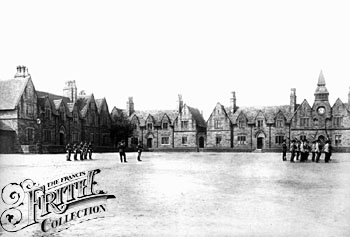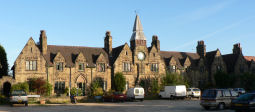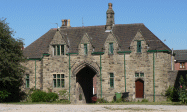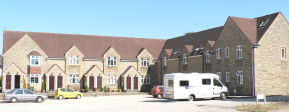Macclesfield Militia Barracks
In 2006 it was surprisingly difficult to find information about the Macclesfield Militia Barracks (or Armoury) on the Internet. There is now (2011) a Wikipedia article with much information. Victorian, from the style of architecture, the 1882 Ordnance Survey shows it as a group of buildings surrounding an open area (the parade ground). In 2006 all but the south east quarter survives, converted into residential accommodation. The south-east quarter has been replaced by 'Armoury Court Mews', a group of maisonettes built c1980? where I am writing these notes. It is now a conservation area.
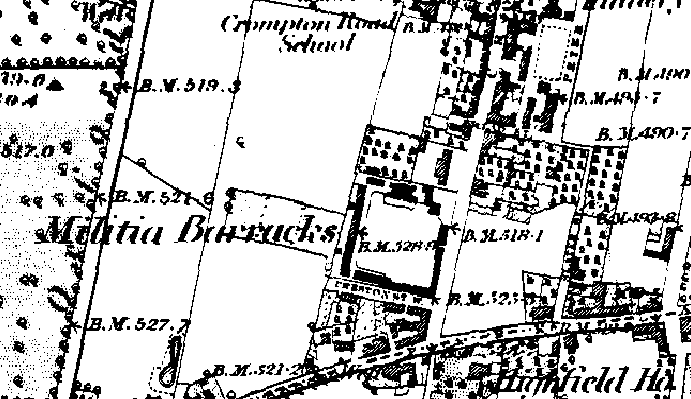
(click on map for larger area)
Located to the south-west of the centre of Macclesfield, on Crompton Road, it was the base of the Cheshire Yeomanry, a branch of the militia, of which troop D was based at Macclesfield. (Any experts reading this please correct me - there are many assumptions here which need confirmation). The following excerpt from the history of Macclesfield outlines the role of the militia (prior to their being called up\for foreign service (Crimea? Boer? WWI) .
"In the absence of a police force the only known way of dealing with serious disturbances of the peace was by using military force, and, in times of crisis, the Mayor of Macclesfield, in his capacity of justice of the peace, would appeal to the Lord Lieutenant for aid. A contingent of cavalry or militia would be sent to the town. It became necessary to make provision for housing the soldiers, for billeting in private houses was not desirable in times of civil unrest. In 1820 the corporation resolved that they would 'pay th rent of a temporary barracks for the military which the particular urgency of the case might render it necessary to station here, and will, therefore, be answerable for the rent of the building for one year'. As it was not always possible to obtain help from the military, especially if the disturbances were spread over a wide area, a force of voluntary yeomanry was raised to act locally in aid of the military or when they were they were not available.
The Militia Barracks were built 1858/9, designed by a local architect James Stevens, together with a Mr Pownall of London. James Stevens was also responsible for the extension to the Town Hall which now forms the main front), the Baths (now demolished), the Chadwick Free Library on Park Green, the restoration to the Parish Church and the Macclesfield infirmary.2
The following engraving shows the barracks located in open countryside at some period between 1859 and 1882.

Frith's have a photograph of the parade ground and north-west quarter from 1903 (very similar from the view from my window in 2006 except that an overgrown garden has been constructed in the middle of the parade ground).
Pictures 2006 from inside parade ground:-
(Click on images for larger pictures - about 0.5MB)
Further research required!
Notes
1 "A History of Macclesfield" pp. 180, 181, edited by C. Stella Macclesfield published by E.J. Morten 1976 ISBN 0859720349
2 "Macclesfield" pp59-61, by Matthew Hyde, published by the Francis Frith Collection, 2005 ISBN 1845890132
3 Macclesfield. — At the Cheshire quarter sessions, held at Knutsford, a vote of 11500l. has been carried for the erection of new militia barracks at Macclesfield, the money to be borrowed in the usual way on the county rate. The Builder, May 1st 1858
